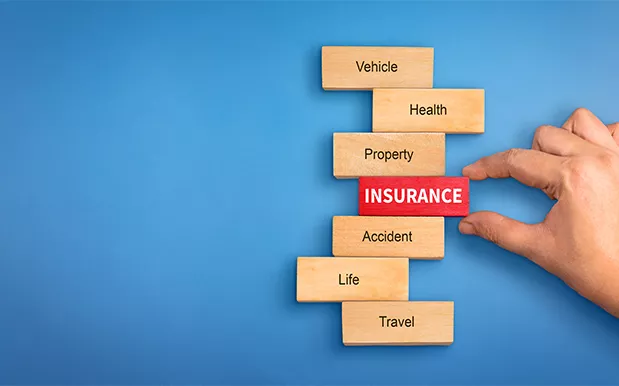State Farm is one of the largest and most well-known insurance providers in the United States. When it comes to car insurance, understanding the cost factors and coverage options can be quite complex. This article provides an in-depth look at the factors that influence State Farm car insurance rates, helping you get a clear picture of what to expect.
Overview of State Farm Car Insurance
State Farm offers a range of car insurance policies to meet various needs. Their offerings include liability coverage, comprehensive coverage, collision coverage, and more. Each type of coverage protects against different risks, and the cost can vary based on a number of factors.
State Farm Car Insurance Types
Liability Coverage: This covers damages to other people and property if you’re at fault in an accident. It includes bodily injury liability and property damage liability.
Comprehensive Coverage: This protects your vehicle from non-collision-related incidents, such as theft, vandalism, or natural disasters.
Collision Coverage: This covers damage to your vehicle resulting from a collision with another vehicle or object.
Personal Injury Protection (PIP): This helps cover medical expenses for you and your passengers, regardless of who is at fault.
Uninsured/Underinsured Motorist Coverage: This protects you if you’re involved in an accident with a driver who lacks adequate insurance.
Additional Coverage Options
State Farm also offers optional coverages like rental car reimbursement, roadside assistance, and custom parts and equipment coverage. Each of these options can add to your premium but may provide valuable protection.
Factors Influencing State Farm Car Insurance Costs
Several factors determine how much you will pay for State Farm car insurance. Understanding these can help you manage your premiums and possibly reduce your costs.
1. Vehicle Type and Model
The type of car you drive plays a significant role in your insurance cost. High-end or luxury vehicles typically cost more to insure due to their higher repair costs and increased risk of theft. Similarly, newer models with advanced safety features may qualify for discounts.
2. Driving History
Your driving record is one of the most critical factors in determining your insurance rates. Drivers with a history of accidents or traffic violations are considered higher risk and may face higher premiums. Conversely, a clean driving record can help lower your costs.
3. Location
Where you live affects your car insurance premium. Areas with higher rates of accidents, theft, or vandalism generally have higher insurance costs. Additionally, urban areas with dense traffic often see higher rates compared to rural areas.
4. Age and Gender
Insurance rates can vary based on age and gender. Younger drivers, particularly those under 25, often face higher premiums due to their inexperience. Gender can also play a role, as statistical data may show differences in risk levels between males and females.
5. Credit Score
Many insurance companies, including State Farm, use credit scores as a factor in determining premiums. A higher credit score is often associated with lower insurance rates, as it indicates financial responsibility.
6. Coverage Limits and Deductibles
The amount of coverage you choose and your deductible level significantly impact your premium. Higher coverage limits and lower deductibles increase your premium, while lower coverage limits and higher deductibles can reduce it.
7. Discounts and Savings
State Farm offers various discounts that can lower your insurance cost. Common discounts include:
Safe Driver Discount: For drivers with a clean record.
Multi-Policy Discount: For bundling car insurance with other policies, such as homeowners or renters insurance.
Good Student Discount: For students with good academic performance.
Vehicle Safety Feature Discount: For cars equipped with advanced safety features.
Average Cost of State Farm Car Insurance
The average cost of State Farm car insurance varies widely based on the factors discussed above. However, here’s a general overview based on different driver profiles:
1. Average Annual Premiums
Young Drivers (18-24): Young drivers typically face higher premiums, averaging around $2,000 to $3,000 annually, depending on their driving record and vehicle type.
Middle-Aged Drivers (25-60): For drivers in this age group with a clean record, premiums can range from $1,200 to $1,800 annually.
Senior Drivers (60+): Seniors may see premiums in the range of $1,000 to $1,500 annually, though this can vary based on their driving history and health.
2. Vehicle Type and Model Costs
Sedans: Generally, sedans have lower insurance costs, averaging between $1,200 and $1,500 per year.
SUVs: SUVs tend to have slightly higher premiums, with costs ranging from $1,500 to $2,000 annually.
Luxury Cars: Luxury or high-performance vehicles often see premiums ranging from $2,000 to $3,500 per year.
See Also: What Does Rental Property Insurance Cover?
State Farm Car Insurance Rates Compared to Competitors
State Farm is known for its competitive rates, but it’s essential to compare it with other insurance providers. On average, State Farm’s rates are often lower than those of some other major insurers, particularly for drivers with good records and those who qualify for various discounts.
Comparison with Major Competitors
Geico: Geico often offers slightly lower premiums compared to State Farm, especially for younger drivers.
Progressive: Progressive may have competitive rates, particularly if you use their Snapshot program to monitor driving habits.
Allstate: Allstate’s rates can be higher, but they offer various discounts and benefits that might be worth considering.
How to Get a Quote from State Farm
Getting a quote from State Farm is straightforward and can be done through various methods:
1. Online Quote Tool
State Farm’s website offers an online quote tool where you can input your information and receive an estimated premium. This is a quick way to get an idea of your potential costs.
2. Local Agent
Contacting a local State Farm agent can provide a more personalized experience. Agents can help tailor coverage options to your specific needs and provide detailed information on discounts you may qualify for.
3. Phone Quote
You can also call State Farm’s customer service for a quote. This method allows you to ask questions and get immediate assistance.
Tips for Reducing Your State Farm Car Insurance Costs
If you’re looking to lower your State Farm car insurance premiums, consider the following tips:
1. Increase Your Deductible
Raising your deductible can lower your premium. Just ensure you have enough savings to cover the higher deductible in case of a claim.
2. Bundle Policies
Combine your car insurance with other policies, such as homeowners or renters insurance, to take advantage of multi-policy discounts.
3. Maintain a Good Driving Record
A clean driving record not only helps keep your premiums lower but also makes you eligible for various discounts.
4. Take Advantage of Discounts
Be sure to inquire about all available discounts, such as those for safe driving, good students, or vehicles with safety features.
5. Review Your Coverage Annually
Regularly review your coverage needs and adjust them as necessary. You might find that you can lower your premium without sacrificing essential coverage.
Conclusion
Understanding the cost of State Farm car insurance involves considering multiple factors, including your vehicle type, driving history, location, and personal details. By exploring different coverage options, taking advantage of discounts, and regularly reviewing your policy, you can manage and potentially reduce your insurance costs. State Farm offers competitive rates, but it’s always wise to compare with other insurers and get personalized quotes to ensure you’re getting the best deal for your needs.
[inline_related_posts title=”You Might Be Interested In” title_align=”left” style=”list” number=”3″ align=”none” ids=”3662,3603,3467″ by=”categories” orderby=”rand” order=”DESC” hide_thumb=”no” thumb_right=”no” views=”no” date=”yes” grid_columns=”2″ post_type=”” tax=””]

































